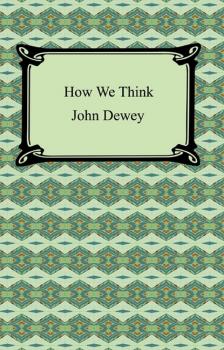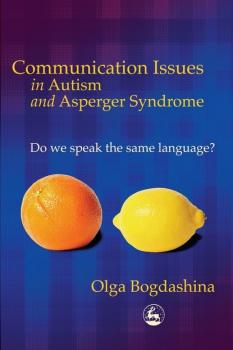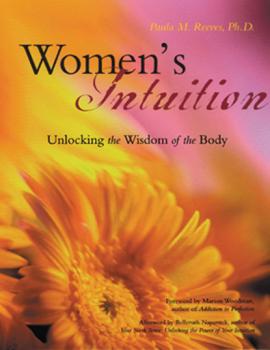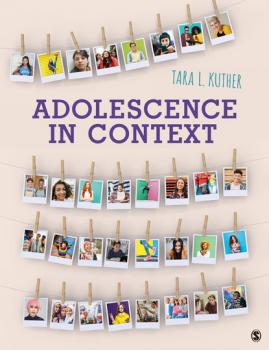ТОП просматриваемых книг сайта:
Общая психология
Различные книги в жанре Общая психология, доступные для чтения и скачиванияАннотация
"How We Think" is John Dewey's exposition on the nature of human thinking. Illustrated through numerous everyday examples, Dewey details the varying processes by which one might engage in the critical thinking process. With the aim of making students better at the methods of thought and thus better students, «How We Think» is an essential read for both students and teachers alike.
Аннотация
Darwin famously proposed that sexual competition and courtship is (or at least was) the driving force of “art” production not only in animals, but also in humans. The present book is the first to reveal that Darwin’s hypothesis, rather than amounting to a full-blown antidote to the humanist tradition, is actually strongly informed both by classical rhetoric and by English and German philosophical aesthetics, thereby Darwin’s theory far richer and more interesting for the understanding of poetry and song. The book also discusses how the three most discussed hypothetical functions of the human arts–competition for attention and (loving) acceptance, social cooperation, and self-enhancement–are not mutually exclusive, but can well be conceived of as different aspects of the same processes of producing and responding to the arts. Finally, reviewing the current state of archeological findings, the book advocates a new hypothesis on the multiple origins of the human arts, posing that they arose as new variants of human behavior, when three ancient and largely independent adaptions–sensory and sexual selection-driven biases regarding visual and auditory beauty, play behavior, and technology–joined forces with, and were transformed by, the human capacities for symbolic cognition and language.
Аннотация
Providing a theoretical foundation for understanding communication and language impairments specific to autism, Olga Bogdashina explores the effects of different perceptual and cognitive styles on the communication and language development of autistic children. She stresses the importance of identifying each autistic individual's nonverbal language – which can be visual, tactile, kinaesthetic, auditory, olfactory or gustatory – with a view to establish a shared means of verbal communication. She offers an explanation of why certain approaches, for example PECS, might work with some autistic children but not others. Offering real insights, the `What They Say' sections enable the reader to see through the eyes of autistic individuals and to understand their language differences first hand. `What We Can Do to Help' sections throughout the book give practical recommendations on what to do in order to help autistic individuals use their natural mechanisms to learn and develop social and communicative skills. The final chapters are devoted to assessment and intervention issues with practical recommendations for selecting appropriate methods and techniques to enhance communication, based on the specific mode of communication a person uses.
Аннотация
Prenatal and Perinatal Psychology has been studying our earliest development from the baby's point of view for over 30 years. Findings reveal we are conscious, aware beings who already have a sense of self as we begin human life. This book explores the mysteries of our multidimensional nature and the extraordinary stories babies, children, and adults tell us of their life in the womb and during birth.
Nearly all of today’s early development models and understandings assume biology is our primary nature and that the capacity for sentience is dependent on brain development. Our current professional and parenting practices are built upon these fundamental assumptions.
The Integrated Model of early development developed in Welcoming Consciousness moves beyond current biology-first models to embrace both our transcendent and human perspectives and capacities and evolves how we can best support babies’ multidimensional wholeness and human potential from the beginning of life.
The Integrated Model is built upon clinical findings and extensive review of research in infant development, prenatal and perinatal psychology, integral psychology, and consciousness studies. The touching clinical stories included bring these new concepts alive and the 30 page bibliography gives the reader avenues to explore this territory more fully.
“This unique work of Dr. McCarty is an intellectual milestone–the first attempt to integrate theory and practice of prenatal and perinatal psychology with other developmental theories.” – David Chamberlain, PhD, author, The Mind of Your Newborn Baby
“Welcoming Consciousness is an exceptional asset to the growing understanding of both the exquisite awareness and delicate vulnerabilities that babies bring with them into the world.” – Peter A. Levine, PhD, co-author Trauma Through a Child’s Eyes and author, In An Unspoken Voice
“I highly recommend Welcoming Consciousness, its perspective on integrating mind, body and spirit has the potential to change the world. Dr. McCarty’s synthesis of leading edge biomedical science, current psychology and the awareness acquired through her professional practice provides an important contribution to our understanding of human experience.” – Bruce H. Lipton, author, The Biology of Belief; co-author, Spontaneous Evolution
Nearly all of today’s early development models and understandings assume biology is our primary nature and that the capacity for sentience is dependent on brain development. Our current professional and parenting practices are built upon these fundamental assumptions.
The Integrated Model of early development developed in Welcoming Consciousness moves beyond current biology-first models to embrace both our transcendent and human perspectives and capacities and evolves how we can best support babies’ multidimensional wholeness and human potential from the beginning of life.
The Integrated Model is built upon clinical findings and extensive review of research in infant development, prenatal and perinatal psychology, integral psychology, and consciousness studies. The touching clinical stories included bring these new concepts alive and the 30 page bibliography gives the reader avenues to explore this territory more fully.
“This unique work of Dr. McCarty is an intellectual milestone–the first attempt to integrate theory and practice of prenatal and perinatal psychology with other developmental theories.” – David Chamberlain, PhD, author, The Mind of Your Newborn Baby
“Welcoming Consciousness is an exceptional asset to the growing understanding of both the exquisite awareness and delicate vulnerabilities that babies bring with them into the world.” – Peter A. Levine, PhD, co-author Trauma Through a Child’s Eyes and author, In An Unspoken Voice
“I highly recommend Welcoming Consciousness, its perspective on integrating mind, body and spirit has the potential to change the world. Dr. McCarty’s synthesis of leading edge biomedical science, current psychology and the awareness acquired through her professional practice provides an important contribution to our understanding of human experience.” – Bruce H. Lipton, author, The Biology of Belief; co-author, Spontaneous Evolution
Аннотация
Women's intuition is real, says Paula Reeves. Encoded in a woman's DNA, this subtle yet potent source of knowledge has been doubted and dismissed as an old wives' tale. Because social conditioning and male-dominated culture have caused women to feel disconnected from their own bodies, Dr. Reeves believes that most women are unaware of what their intuition is trying to tell them.In Women's Intuition, Dr. Reeves guides readers to remove the blocks preventing this channel of knowledge from informing and enriching their daily lives. By evoking body-based intuition, readers can reestablish their body-mind bond and access their intuitive power for healing and insight.
Аннотация
Studies show that young girls often develop faster than their male counterparts, grasping concepts such as math and sports just as easily – until they reach early adolescence. Then, girls quickly fall behind boys, victims to society's confusing dictates of what being female means. According to parenting expert Will Glennon, reinforcing a young girl's self-esteem through carefully considered «boosters» is the key to helping girls hold their own in the world. This guide helps parents and teachers understand the subtle difference between «boosters» and «busters.» For example, complimenting a young woman on her appearance may give her the idea that she is valued only for her looks. In 200 Ways to Raise a Girl's Self-Esteem, readers will find ways to impart a strong sense of self-worth to girls in everyday situations.
Аннотация
Adolescence: Lives in Context is a topically oriented text for the Adolescence and Emerging Adulthood development course organized around three key themes: the centrality of context, the importance of research, and the applied value of developmental science. The text, developed by teacher and scholar Tara Kuther, will be written to engage students through her digestible, student-friendly writing style. Adolescence: Lives in Context will deliver current and classic research, foundational theories and will help students to comprehend how those theories apply to their future careers and own lives through a lens of contexts across each developmental stage and topic. ?
Аннотация
In <em>Cognitive Science 3e </em>Friedenberg and Silverman provide a solid understanding of the major theoretical and empirical contributions of cognitive science. Their text, thoroughly updated for this new third edition, describes the major theories of mind as well as the major experimental results that have emerged within each cognitive science discipline.<br /> <br /> Throughout history, different fields of inquiry have attempted to understand the great mystery of mind and answer questions like: What is the mind? How do we see, think, and remember? Can we create machines that are conscious and capable of self-awareness? This books examines these questions and many more. Focusing on the approach of a particular cognitive science field in each chapter, the authors describe its methodology, theoretical perspective, and findings and then offer a critical evaluation of the field. <br /> <br /> Features:<br /> <br /> <ul> <li>Offers a wide-ranging, comprehensive, and multidisciplinary introduction to the field of cognitive science and issues of mind. </li> <li>Interdisciplinary Crossroads” sections at the end of each chapter focus on research topics that have been investigated from multiple perspectives, helping students to understand the link between varying disciplines and cognitive science. </li> <li>End-of-chapter “Summing Up”<strong> </strong>sections<strong> </strong>provide a concise summary of the major points addressed in each chapter to facilitate student comprehension and exam preparation </li> <li>“Explore More”<strong> </strong>sections link students to the Student Study Site where the authors have provided activities to help students more quickly master course content and prepare for examinations </li> <li>Supplements: A password-protected Instructor’s Resource contains PowerPoint lectures, a test bank and other pedagogical material.The book's Study Site features Web links, E-flash cards, and interactive quizzes. </li> </ul>
Аннотация
In this easy-to-read, science-based book, parents, caregivers, and adults of all kinds discover how discipline affects children’s development, why intervention should reinforce connection not separation, and why the disciplinary strategies that may have been used on us as children are not the ones that children really need. As a practicing child and family psychologist and advisor to the British Columbia ministry of children and families, Dr. Vanessa has seen it all, and she has navigated hundreds of tough situations with families. Drawing on scientific research and a wealth of clinical experience, she shows you how to put out the fire without dampening your child’s spirits; how to correct their behavior while emphasizing connection; and how to discipline without damage.
Аннотация
Written by one of the pioneers in visual perception, <I>Seeing </I>provides an overview of the basics of sight, from the anatomy of the eye, to optical illusions, to the way neural systems process visual signs. To help readers better appreciate the most-used of our five senses, Tom Cornsweet describes the early physical and physiological processes that occur in human vision in relation to the forces of evolution. He also includes answers to common questions about vision—including those that many of us ask during a visit to an eye doctor—to illustrate how the study of vision can provide a better understanding of one’s everyday relationship with sight.










